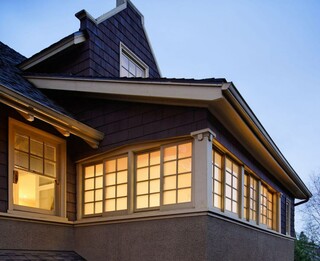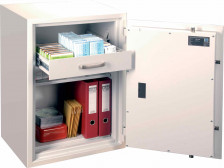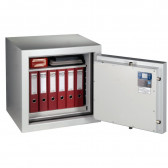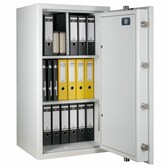Installing a safe in your home or office is an important decision that requires proper planning and preparation. The safe should be placed in a location that offers optimum protection against burglary, fire, flooding or other hazards.
Types of safes used in a house
If you are concerned about the security of your possessions at home, want to hide valuables, cash, storage media, documents that are important to you, or perhaps need a place to store weapons, then a home safe is an excellent idea. There are 3 main product categories to choose from:
Free-standing safes
By far the most secure, the heaviest safes, having the highest security ratings. A freestanding safe is assembled by screwing it to the floor and/or wall with a steel screw. There is the widest choice in this category, with fireproof series also available.
Wall safes
This is a safe that is installed in a suitable recess in the wall that has been prepared in advance. Installation of a wall safe involves masonry work. In this category, the maximum is class I in accordance with standard EN 1143-1, and it is not possible to make a wall safe which has a fire-resistance class.
You will find important information about wall safes in the text "Wall safe – everything you need to know about it".
Floor safes
These are similar to small furniture safes, however, the safe is inserted into a pre-prepared hole in the floor, and the opening method "from above" is facilitated by hydraulic aids.
Before buying a safe, it is worth looking around for a place to install the safe at home, so that, on the one hand, a thief cannot get at your valuables, and on the other hand, to hide the safe from casual visitors; finally, so that the installation of a safe does not have to be accompanied by a revolution in your life and personal space.
Installation is important – further secure your new home safe against theft
A burglar-proof safe is generally designed to protect cash, important documents or jewellery from theft. If you are thinking of buying a safe, pay attention to three fundamental factors that make up the overall level of protection.
The security class of the safe
Briefly reflects how long it takes to drill through the body. The higher the security class, the longer the process takes. A burglary generally takes a few minutes or so, so it is important that the safe cannot be accessed at a walk-in. In our range of safes you will find safes from class S1 according to EN 14450 (the lowest) to class V according to EN 1143-1 (the highest).
Fire resistance level
Expressed in minutes, this indicates the time range over which a safe exposed to prolonged exposure to high temperatures will maintain a moderate internal temperature. 30-, 60- and 120-minute classes are available in accordance with EN 1047-1.
The weight of the safe
Derived directly from the burglary and fire resistance class: the higher the class, the heavier the safes are. This is of great importance because if a burglar takes the safe out, the entire contents will be lost.
Installation of the safe as a complement to the other parameters
Here are some factors to consider when choosing a location for a safe:
The security level of the safe
The safe should be fixed to the wall or floor with special screws or anchors to prevent it from being moved or balanced. It should also be hidden from unauthorised view, such as behind a painting, a piece of furniture or in a cupboard.
Accessibility to the safe
The safe should be easily accessible to the owner or authorised persons, but at the same time difficult to locate for potential burglars. It is advisable to place it in a location that is frequently visited by the owner or authorised persons, such as a bedroom, study or living room.
Environmental conditions
The safe should be protected from moisture, temperature and other factors that could damage its contents or mechanism. The safe should be placed in a dry place with good ventilation and a stable temperature; it should rather not be placed in a bathroom, kitchen, basement or garage.
Is it worth anchoring large safes with heavy weight?
Not only is it worth it, but you actually have to mount the safe to the structural elements of the building. Firstly, according to European standard EN 1143-1, physical mounting of the safe is necessary for any safe weighing less than 1,000 kg, a weight rarely found in safes on the civilian market. Secondly, permanently mounting the safe by drilling into the floor or load-bearing wall significantly reduces the risk of the safe, even a heavy one, being carried away. We know of cases in the industry where safes weighing up to several hundred kilograms have been taken away from the scene of a burglary, so any way of improving security is worth considering.
How do you effectively hide a safe in your house?
One of the popular questions regarding the dilemma of where to install a safe in a house is: how do you hide a safe from a burglar? Hiding a safe can indeed be an element in reducing the risk of theft, provided, however, that it does not force you to compromise being too rotten. Wall safes have their advantages, but remember that a wall safe will always be objectively weaker than a similar sized free-standing safe in the same burglary rating. So if concealing a safe in your house or flat is a priority, consider freestanding safes first when planning your purchase.
When choosing where you want to install the safe in your home, consider that the fewer people around you who know about the safe, the better. Therefore, if strangers frequent your home, take care to place it where it will not be conspicuous.
There are several places where you can comfortably hide a safe, these are primarily rooms that are intimate to you on a daily basis, such as a dressing room or bedroom, which you would rather not allow outsiders into. You can also place the safe in the study. By locating the safe in a built-in piece of furniture, you can easily hide it from your visitors.
Mounting the safe in a wall
However, if, having weighed up all the pros and cons, you are planning to buy a wall-mounted safe, this type of safe is worth looking into. A wall safe differs from free-standing models in that its interior is defended by a door with concealed hinges allowing the front to remain flat. When choosing a wall-mounted safe, you need to choose a wall of suitable thickness.
You can read more about this in the article "A safe to be built into the wall".
Floor-mounted furniture safe
Floor-mounted safes are a secure variant. In principle, this is more of a locker than a real safe. In fact, the safe is then mounted in the floor, and it can also be covered with panels to hide it effectively, but bear in mind that easy access to a safe installed in this way will not be possible.
Summary
Placing a safe in the house is not an easy story. You can install it in your home in a variety of non-obvious locations; however, remember that the security class of the safe, its weight, the degree of fire resistance and professional installation will determine whether your valuables will be safe in the first place, and only finally the location itself. A thief will look for safes until he finds one, and he will find one with a high probability. Our job is to ensure that what you keep in the safe does not fall into his hands. If you have any questions or concerns – we are here!





